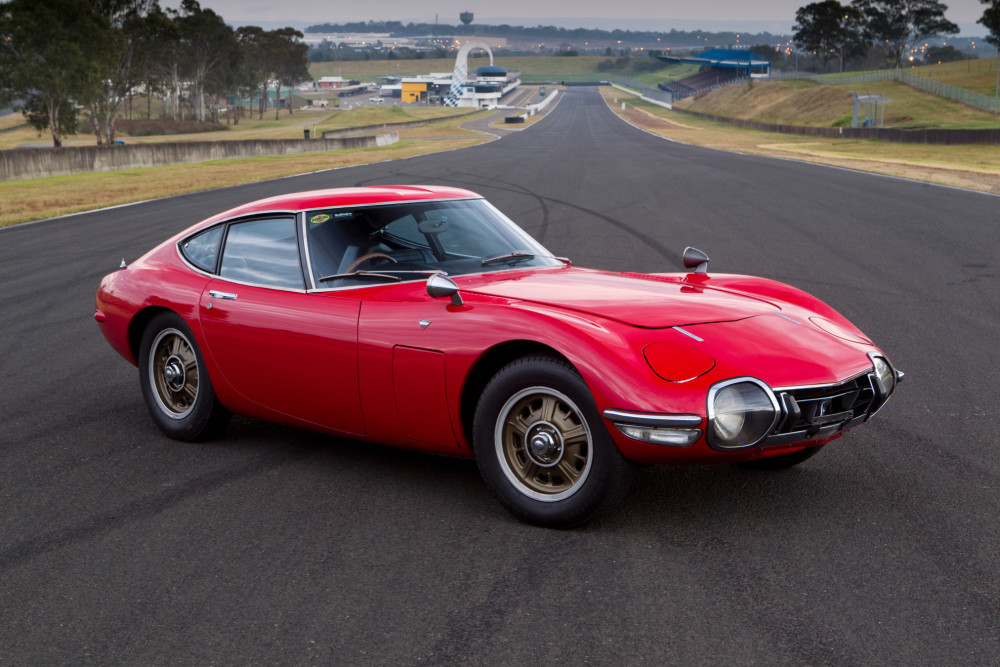TOYOTA GAZOO Racing announced that it will reproduce replacement parts for the Toyota 2000GT as part of the GR Heritage Parts Project, and will sell them both domestically and overseas.
This project is an initiative that will reproduce key replacement parts that were no longer available, and sell them as genuine parts to customers who aspire to continue driving their cherished cars filled with their memories. Previously, in May 2019, an announcement was made to reproduce and sell replacement parts for A70 and A80 Supra models at the GR Supra press conference, and the Toyota 2000GT will be the next model following on from this.
The Toyota 2000GT was a sports car launched in 1967 through collaboration with Yamaha Motor Co., Ltd. Until production ended in 1970, 337 units were manufactured. It adopted the latest Japanese technology, including a 2.0-liter DOHC straight six engine, four-wheel double-wishbone suspension, four-wheel disc brakes, radial tires, magnesium alloy wheels, and retractable headlamps, while boasting a maximum speed of 220 km/h – on a par with European sports cars of the day.
Prior to its launch, it took part in speed trials and, despite inclement conditions with an approaching typhoon, it set three world records (10,000 miles, 15,000 km, 72 hours) and 13 international records. It also achieved wins and high placement in various races becoming a world-renowned sports car for Toyota, and was also used in scenes shot in Japan for the James Bond film, You Only Live Twice.
Reproduced parts may be purchased from Toyota dealers in the same way as normal genuine parts. However, due to the uniqueness of the Toyota 2000GT, sales will be restricted to owners, to prevent reselling; and the number of parts sold will be limited per car.
At the beginning of March 2021, Toyota South Africa Motors made it known that it is in the process of restoring what could only be described as the crown jewel in its historic fleet. This task would not be an easy one as there are very few spare parts available for models this rare.

Thus the announcement that Toyota Gazoo Racing would be reproducing replacement parts for the Toyota 2000GT as well as the A70 and A80 Supra models, came with great relief, not only for TSAM but collectors worldwide. But obtaining the parts was just one part of the challenge, selecting a team that could take on the task of performing a complete nut and bolt restoration on the legendary 2000GT, was the second part.
The team that would head up the project is father-and-son duo Wynand Strydom Sr and Wynand Strydom Jr from Generation Old School Benoni. Their repertoire spans from Concours-winning Beetles and Microbuses, to American muscle cars such as Mustangs and Chargers.
Although neither of them had ever seen a Toyota 2000GT in person before, much less had one in their shop. Both are well versed in disassembling a vehicle and documenting each step of the way. Years of experience has also prepared them for the task of researching each and every component – before commencing restoration.
The team behind the restoration believes in the revival of parts rather than just replacing them. This not only preserves the value of the vehicle but the originality as well. Thankfully, Toyota South Africa provided Generation Old School with literature pertaining to the 2000GT, amongst which is a rather large book detailing every single process to disassemble the car and every part number.
It wasn’t long after the car arrived at Generation Old School that work began on dismantling the icon. Wynand Jr, who has taken the lead on the restoration, says that it has been a learning curve for everyone involved. Every nut and bolt needs to be removed with care as one might not be able to replace it.

The body has been separated from the chassis, which in itself is a rather special moment. Now, nearly 53 years after the marriage of the body and chassis, the two are once again apart, only to meet again when each has been completely restored.
As for the chassis itself, Wynand Jr has confirmed that the overall condition of key components is good, with only minimal renewal work being needed. There are, however, other components that need to be completely refurbished or replaced. Four such items are the magnesium alloy wheels – which need special paint preparation and paint to restore them to their original colour.
On the interior front, the intricacies of the facia make it stressful to remove items in the hopes that none break. The wood trim for example (which covers the entire centre console) is brittle and faded, it is also extremely thin. The chrome detailing cannot be bent when being removed and it is said that many of the wires are crumbling at the slightest touch.
All the individual components have been placed into small plastic bags, labelled and safely stored awaiting refurbishment. Both the body and the chassis has arrived at Dino’s Classic Restoration, which not only had to take out small dents and deformations, but focus on the most intricate of details to ensure accuracy.
Stay tuned for the next Chapter, as we delve into the auto-body works, unpack some details on the chassis refurbishment and more.










More Stories
Maserati celebrates the A6G 2000
Die Slag van die Taxibestuurders
Suid-Afrika se eerste ernstige motorongeluk.